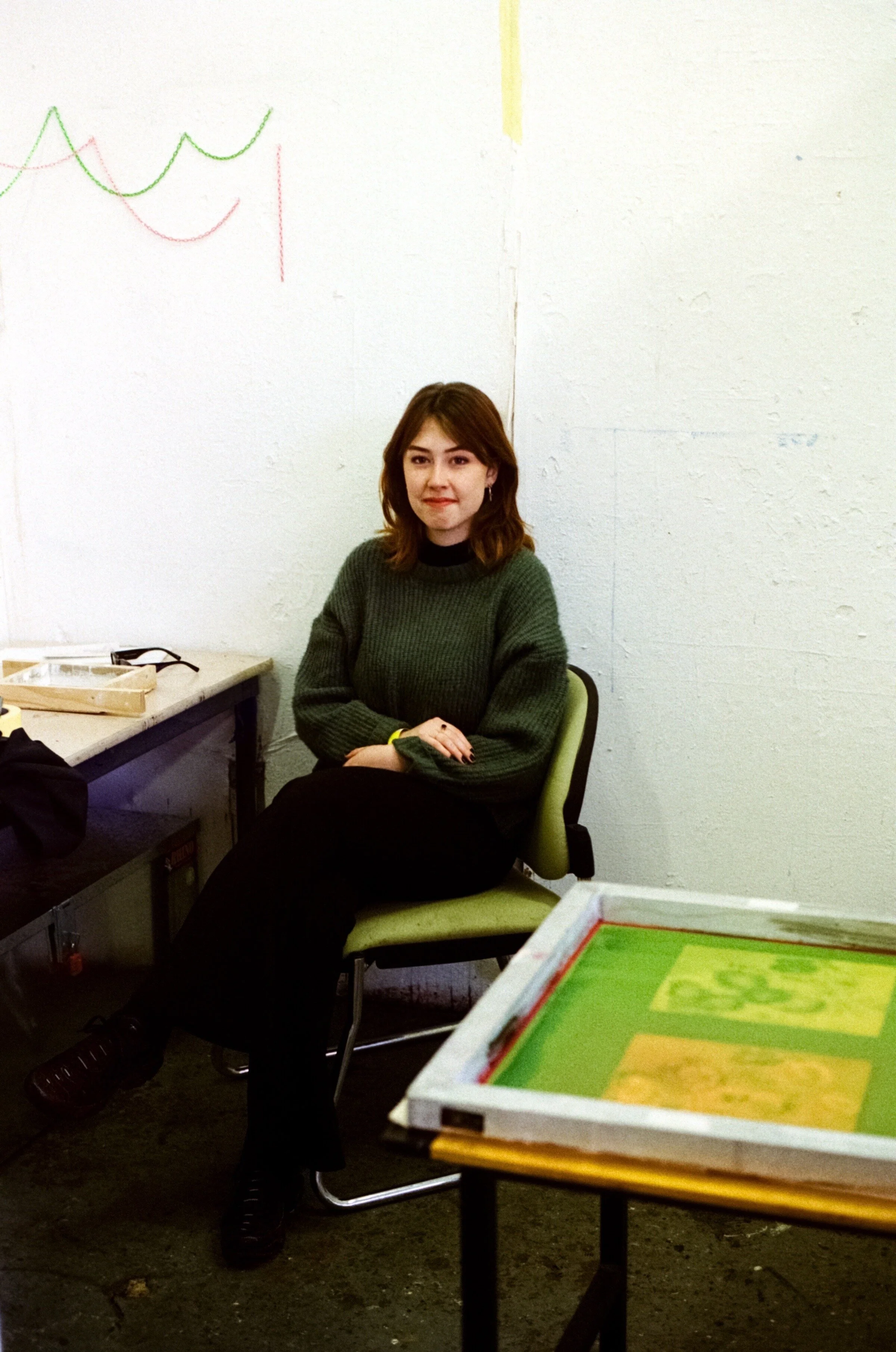Image courtesy of the artist.
Taylor Steel
Taylor Steel’s practice of contemporary printmaking aims to stray from the traditions of print on paper. A movement away from traditional use of materials and representation, she looks at alternate uses of materials, the distortion and manipulation of imagery, and the use of technology in art. Steel primarily works with an archive of photographs either taken by herself, collected from the past or found material. Utilising technologies such as computer programs, scanners and printers, she alters these images in a process of abstraction to then be reproduced and viewed as new images, exploring the ambiguity of print. Her work creates a material dialogue between personal, digital and physical archives.
Steel is currently in her final year at National Art School completing a Bachelor of Fine Arts.
Tell us about your creative process, what drives your practice?
My creative process is an exploration into my interest in image manipulation and distortion. In an age dependent on technology, infinite amounts of visual culture surrounds us, with a constant flow of images circulating our lives daily. Our memories of images overlap and change with time, creating distorted recollections of something once seen.
Working within the practice of printmaking, I use methods of image transfers and screen printing to create process driven work. With the desire to stray from the traditions of print on paper and an interest in the alternative use of materials, I prefer to print onto surfaces such as cast concrete or plaster slabs and aluminium sheets. I aim to work loosely and without a specific plan, choosing images, colours and techniques purely based on what I find visually pleasing in that moment. Screen printing allows for experimental play with colours, textures and layering in my pieces and adds a sense of depth to the work.
What is the role of the photographic archive within your practice?
The imagery used in my work comes from an archive of photographic material I have created or collected over time. It’s mostly made up of my own film photographs, a stack of old National Geographic magazines I found and screenshots of Google maps street view. I try to keep them all together in an expanding file folder but they usually end up scattered around my studio. From my collection I then select the images that are the most appealing to me and to what I want to create in that moment and take them to the scanner where I generally make five to ten different scans of the image. I’ll often make multiple different works from the same original photograph and I find myself constantly sorting through images I’ve used in the past to see if there’s an interesting detail to be further explored.
Can you tell us more about the exploration of technology and distortion or ‘glitch’ within your works?
Technology plays an integral role in the process of my art making. I utilise image editing programs, printers and scanners to create abstract images originating from photographs. Each photo is unpredictably manipulated, warped and modified to be reproduced as a distorted reflection of what it once was. The original image is lost in the process of abstraction and buried in the layers of transfers and silkscreen. Distortion and glitch are things that have always been visually interesting to me and to be able to create works that incapture them is very fun. I think the best part about using distorted images in my work is watching people take a moment to work out what exactly they are looking at, at first glance one might see a landscape only to then realise it's a warped image of a car headlight.
Are there any female printmakers | artists that influence you?
Recently I have been interested in the work of Katja Novitskova, an Estonian artist who focuses on issues of technology, evolutionary processes, digital imagery and corporate aesthetics. Her practice has evolved from her interest in the post-internet era, something I also have an interest in, as well as technology and biological evolution. Her Earthwares series are large image transfers onto epoxy clay tablets and they interest me the most as the process is something I can relate to within my own practice. Sarah Elise Hall is another artist I like who uses industrial materials to create her pieces. Her practice considers humanity’s cumulative impact on the environment.
Finally, what exciting projects are you working on at the moment?
At the moment I am working towards my graduate show at the end of the year. I have been working on some larger scale CMYK screen prints on aluminium sheets as well as some new works on concrete and plaster. I’m trying my best to restrain myself from the comfort of printing onto paper by expanding my prints onto other surfaces which is an exciting and challenging thing to be exploring.

